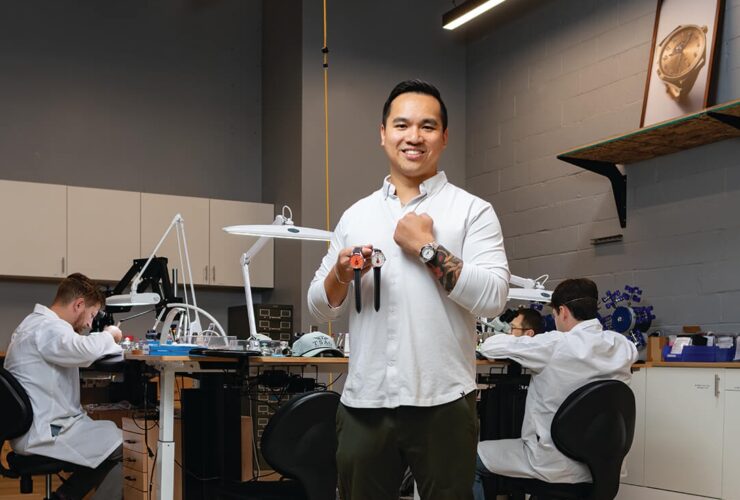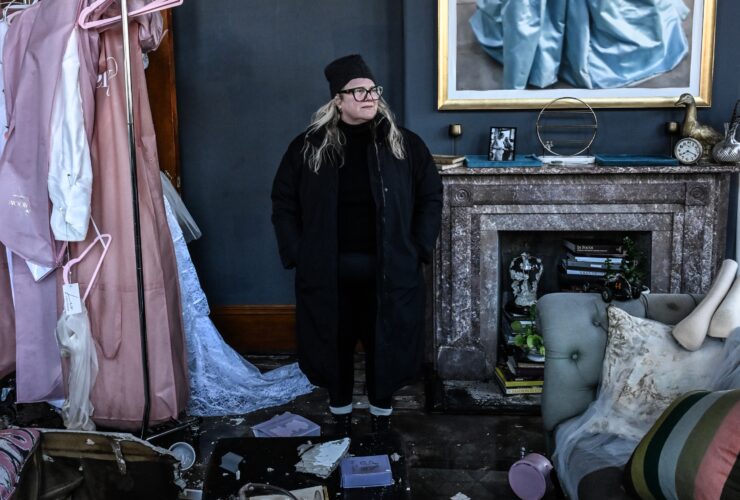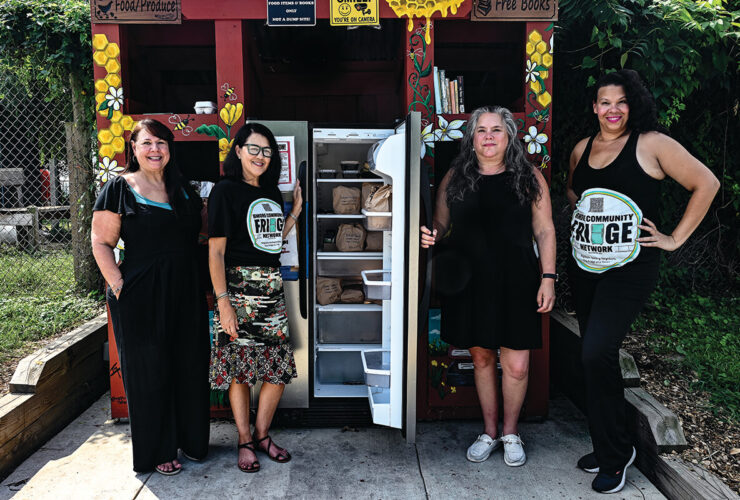
News & Community
Darkest Hour
After a teen kills his father, a caring Bel Air woman gives him hope.

 Special-education teacher Eileen Siple was working at the Maryland School for the Blind when a news bulletin flashed on her cell phone saying that a Harford County teenager had been arrested and charged with killing his father. She didn’t know the 16-year-old boy but wondered if her daughter Hannah, who attended high school in Bel Air, knew him. She’d have to check when she got home that afternoon.
Special-education teacher Eileen Siple was working at the Maryland School for the Blind when a news bulletin flashed on her cell phone saying that a Harford County teenager had been arrested and charged with killing his father. She didn’t know the 16-year-old boy but wondered if her daughter Hannah, who attended high school in Bel Air, knew him. She’d have to check when she got home that afternoon.
At the time—a mild January day in 2012—Siple had no idea her life would become entwined with Robert C. “Bob” Richardson III, the baby-faced teen charged with first- and second-degree murder and a handgun offense in the death of his 58-year-old father, Robert C. Richardson Jr.
As it turned out, Hannah and Bob were both students at C. Milton Wright High School. He was the kid who showed up at school in tattered clothes and was always hungry. Other students, including Hannah, would often buy him lunch. He was also the kid whose mother, Peggy, had died of cancer when he was 10.
After the shooting, a frightened Bob was sent to the Harford County Detention Center to await trial on murder charges. But he wasn’t forgotten. Hannah Siple and her friends became vocal supporters in the community, and so did her mother, Eileen, who was drawn to him emotionally. “As a mom, it was heartbreaking to me that he had to fight this huge fight all alone,” she says.
Over time, Siple settled into the role of a surrogate parent. But she wanted more. So did Bob. Three years ago, she legally adopted him as her son.
She has set up a bedroom for Bob in her comfortable suburban house for when he is released from prison, even though it will likely be years. When he does arrive, he will find a room painted in his favorite colors—beige and blue—and a quilt over his bed that was made from cloth squares created by supporters. His birth mother’s ashes are in an urn on the dresser.
Siple has only known Bob behind bars and realizes there will be growing pains. “When Bob comes home, he has so much learning to do,” she says. “He lived in an environment where he had to worry.”
Bob doesn’t like to talk about the death of his father, Siple says—“It’s very painful for him”—but court documents reveal details of that tragic night on January 9, 2012.
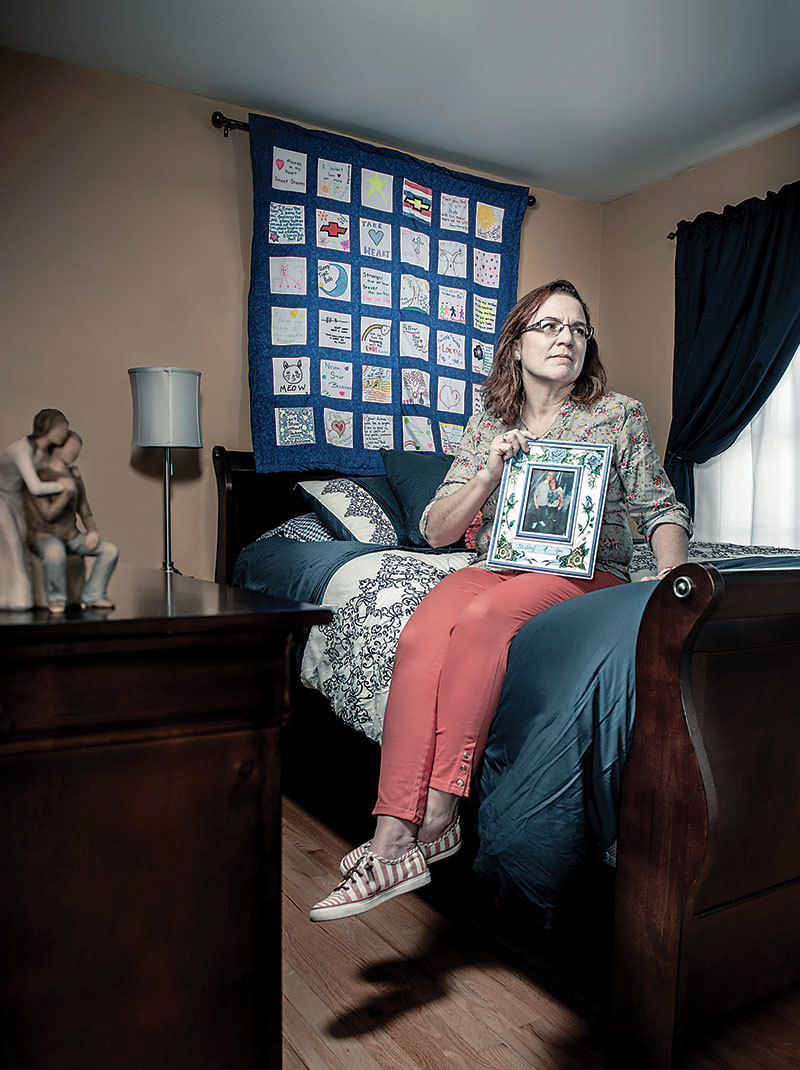
Eileen siple sits in Bob’s room-to-be holding a framed photo of herself and Bob.
 Bob had been thinking about killing his father for a few weeks. He armed himself with a .38 revolver—there was no shortage of guns in the house—and waited. He was tired of being treated like a “slave.”
Bob had been thinking about killing his father for a few weeks. He armed himself with a .38 revolver—there was no shortage of guns in the house—and waited. He was tired of being treated like a “slave.”
He lived in a brick rancher on Moores Mill Road in Bel Air with his father and assorted adults, who crashed there from time to time after his mother died in 2006. His older half-sisters, Allison and Abigail “Abby” Richardson, had moved out—“freedom,” Abby called it—and were living full-time with their mother, Laura Dunivant, in nearby Edgewood.
For Bob, that January Monday started like most school days. He headed to C. Milton Wright, where he was a sophomore. But the evening was anything but ordinary. While his father was watching TV, Bob prepared to kill him. He took a swig of rum from a bottle in his room, picked up the stashed revolver, and shot his father in the back of his head. Blood was everywhere.
“I was in a bad situation, and I did a bad thing, but I’m not a bad person,” says Bob, now 22, in a recent letter. “I made a choice, but it was the only choice I could see.”
After shooting his father, he fled the house in the family’s old Chevy S10 Blazer, smoked pot, and returned home, enlisting two teenage friends to help him. On a bone-chillingly cold and clear night, Bob wrapped his father’s body in a bedspread, put him in the truck, and drove to an Aberdeen duck pond, where he dumped the body in frigid water.
Bob then dropped off his two buddies at their homes (they were later investigated by police but not charged in the crime) and was on the run. He drove to Pennsylvania and back to Harford County, talking to Abby by phone along the way. She urged him to reveal his location after police contacted her.
He threw away his cell phone and kept driving—but not for long. Before dawn, he was caught in Bel Air after crashing his vehicle while fleeing Maryland State Police troopers. Abby stood up for her sibling, telling local media at the time that he was a “good, good child.” She knew the family secrets that would be uncovered.
The waifish teen waived his rights and told a detective where he had taken his father’s body, even providing directions to the pond. He revealed that he “was tired of the way that his father treated him.” He was held without bond.
Over time, it became clear that Bob wasn’t a rebellious teenager turning on a parent in a fit of rage. Whispers of abuse emerged, and grew louder, and neighbors told investigators they always heard yelling coming from the house. “My brother wouldn’t hurt someone intentionally for no reason,” Abby says. “I don’t look at him differently.”
“When Bob comes home, he has so much learning to do. He lived in an environment where he had to worry.”
Family friend Dottie Kilduff recalls staying at the Richardson house when Bob, whose childhood nickname was Bear, was in fifth grade. She witnessed Bob’s treatment by his father firsthand, describing an unheated house with little food, drug use, drinking, and knife games.
“Bobby [his father] was teaching him to flick razors and would throw knives at his feet to see if he would jump,” says Kilduff. “[Bear] was degraded the whole time I was there. He was still mourning his mother.”
His father told him constantly that he was “stupid and an idiot,” Kilduff says. She described a cache of firearms in the house, from BB and pellet guns to rifles and revolvers. The elder Richardson would taunt Bob, telling him, “I brought you into this world, and I can take you out,” she says. To frighten him further, he would shoot a BB gun at the family cats that Bear loved.
His sisters paint a similarly grim picture of family life. Allison recalls the days when she lived with her father. “He was real mean to us,” she says. “We were not allowed to have friends or leave the yard.”
The children, including Bob, were forced to Dumpster dive for food. “He put the kids in because we were smaller,” Abby says. “That’s how we ate. That and sandwiches.”
Ken Watts of Hickory discovered that his daughter, Elle, had been secretly buying Bob meals at school when he noticed that her lunch fees were costing him up to $100 a month. “I’d been buying him lunches every day,” says Watts, who became empathetic when he heard about Bob’s hardships. “He had rags for clothes.”
Still, no one reported Bob’s mistreatment. It fell under the radar until that winter night in 2012 when he joined the ranks of children who have killed their parents, technically known as parricide, but more commonly referred to as patricide when it involves the killing of a father.
The murders are rare, accounting for about 1 percent of all homicides in the United States, according to Mario D. Garrett, a professor in the School of Social Work at San Diego State University. In all, about five parents are killed a week by their biological children in the United States.
“There’s no evidence that the number is going up,” though it may seem like it, says Kathleen M. Heide, a professor of criminology at the University of South Florida in Tampa, and a licensed mental health counselor who has published acclaimed books on juvenile homicide. “When kids are involved in killing their parents, there is so much attention because it is so disturbing.”
The most common patricides are committed by severely abused children, says Heide, who is not involved in Bob’s case. The typical profile is a white male offender with a firearm.
Maryland has seen its share of high-profile patricides over the years, including Nicholas W. Browning, who shot his parents and two younger brothers in their Cockeysville home in 2008 when he was 15, and Lewin Carlton Powell III, who was 16 when he bludgeoned his mother with a bat in Towson in 2008. Both boys were tried as adults because of the brutality of their crimes. Browning was sentenced to four life terms. Powell received a life sentence.
In another case in 2013, Morgan Lane Arnold was 14 when she and her then-19-year-old boyfriend, Jason A. Bulmer, were charged with first-degree murder in the stabbing death of her father, Dennis Lane, in Ellicott City. They were both sentenced to 30 years.
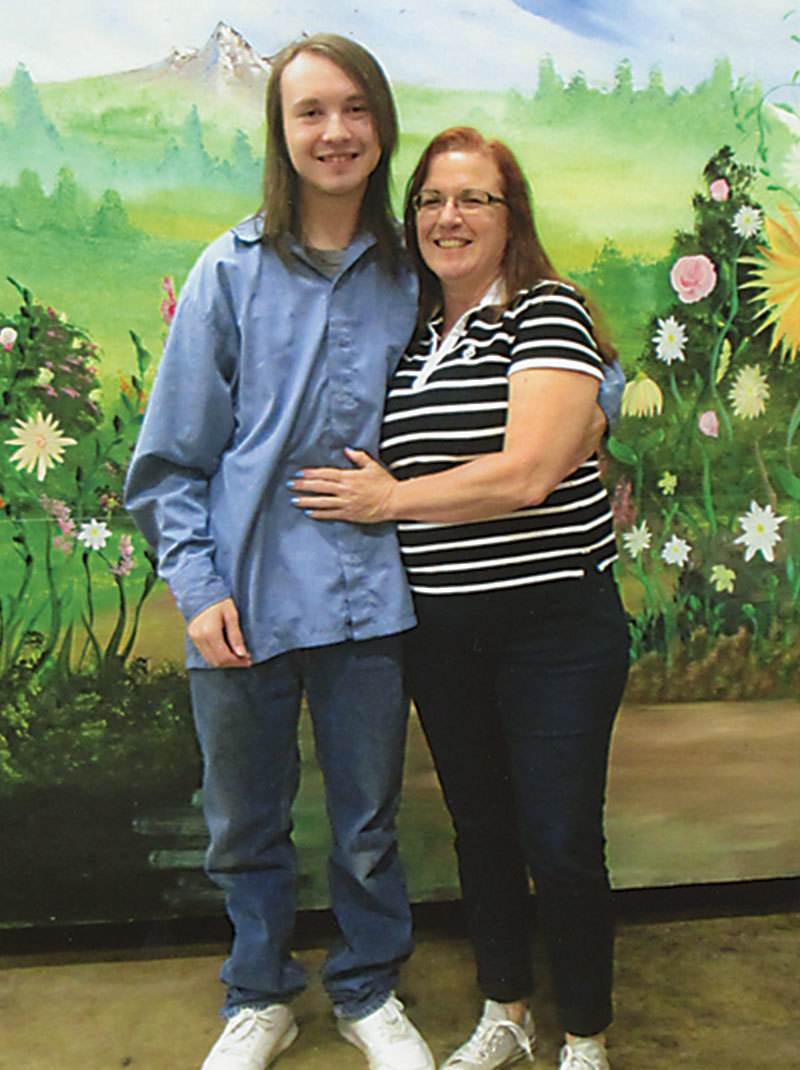
BOB AND HIS NEW MOM, EILEEN SIPLE, DURING A PRISON VISIT.
 After Bob was arrested, he spent months in the Harford County Detention Center, separated from other inmates because of state guidelines for housing juveniles in an adult facility. He was allowed out of his cell one hour a day.
After Bob was arrested, he spent months in the Harford County Detention Center, separated from other inmates because of state guidelines for housing juveniles in an adult facility. He was allowed out of his cell one hour a day.
But Bob’s schoolmates rallied around him, and so did their parents. Groups picketed in front of the Harford County Courthouse for his case to be tried in the juvenile justice system and held fundraisers for his legal needs. Hannah formed a “Free Robert (Bob) Richardson III” Facebook page. By February 2012, there were 1,000 Facebook followers. Today, there are 2,200, including students from a school in Norway.
Hannah was overwhelmed by the feedback. “It got really big, really fast,” says Eileen Siple. “Ninety percent was positive, but there were jerks saying horrible things. I stepped in to help out. This really messed with her—at 16, to be dealing with that kind of stuff.”
Soon, Siple was talking to Bob by phone from jail when Hannah wasn’t available, writing letters, and visiting him with her adopted son Larry, who will turn 31 on June 25. Bob’s story moved her. Siple grew up in rural New York, one of eight children. Her father was a high-school principal. “I always knew at a young age I wanted to be a teacher,” she says.
She ended up living on the Eastern Shore of Maryland with a boyfriend who became her husband. She was working as a teacher at the Holly Center in Salisbury, a facility for people with development disabilities, when she met Larry, a state ward. “He just loved me,” Siple says. “He would crawl into my lap. He was starved for attention.”
"I want people to know that my brother wasn’t the monster they say he is...He was nice. He would give you the shirt off his back."
Larry has severe cognitive disabilities, is visually impaired, and has a seizure disorder. He arrived in the United States from Liberia with malaria and was misdiagnosed, resulting in medical complications. “He has a pretty sordid past,” Siple says.
When his birth mother turned him over to the state for a second time, Siple was eventually able to adopt him. By this time, she was divorced and working as a special-education teacher at the Maryland School for the Blind in northeast Baltimore. She has since left the position and cares for Larry full-time in her Bel Air home with some support services.
Nick Krayger of Joppa worked with Siple at the School for the Blind. He also has been following Siple’s involvement in Bob Richardson’s case. “She has an enormous heart,” he says. “If Eileen gets behind something, she’s behind it forever. She is someone who always looks out for the marginalized people in society.”
Siple continued to stay in touch with Bob, who accepted a plea deal in adult court in 2014 when he was 18. (Maryland law lists 33 crimes, most of which are violent, that are automatically handled in the adult system for older teens.) At his plea hearing, Bob wept as the statements of the case were read.
His attorneys, Stefanie M. McArdle and Kay A. Beehler of the Maryland Office of the Public Defender, talked about the years of physical and mental abuse he endured. Even prosecutor Diane Tobin, deputy state’s attorney for Harford County, was reported in a story by The Dagger as saying, “This all could have been avoided. The state believes there were some people who had an idea of what was going on.”
A forensic psychiatrist, Dr. Joanna Brandt, testified that Bob Richardson suffered from post-traumatic stress disorder and major depressive disorder, “a result of the pervasive physical and emotional abuse perpetrated by his father, who repeatedly threatened and attempted to kill him.”
Another witness called by the defense, Dr. Wade C. Myers, the director of forensic psychiatry at Rhode Island Hospital, said that the “defendant was responding to a reasonable, honestly perceived imminent threat of death when he shot his father.”
Despite the horror stories of abuse, Bob could have faced life in prison if his case had gone to trial and he had been found guilty of first-degree murder by a jury. Instead, he agreed to a plea deal for manslaughter and a firearms charge after being informed of possible outcomes by his attorneys and Judge Stephen M. Waldron, who led the proceedings. Bob was sentenced to 18 years and is serving his time at Maryland Correctional Institution-Hagerstown. He will be up for parole in 2021.
Siple continued to visit Bob, traveling twice a week to Hagerstown, a more than 200-mile round trip from her house, often with Larry buckled in the back seat.

A YOUNG BOB RICHARDSON III FEEDS THE GEESE WITH HIS BIOLOGICAL MOTHER.
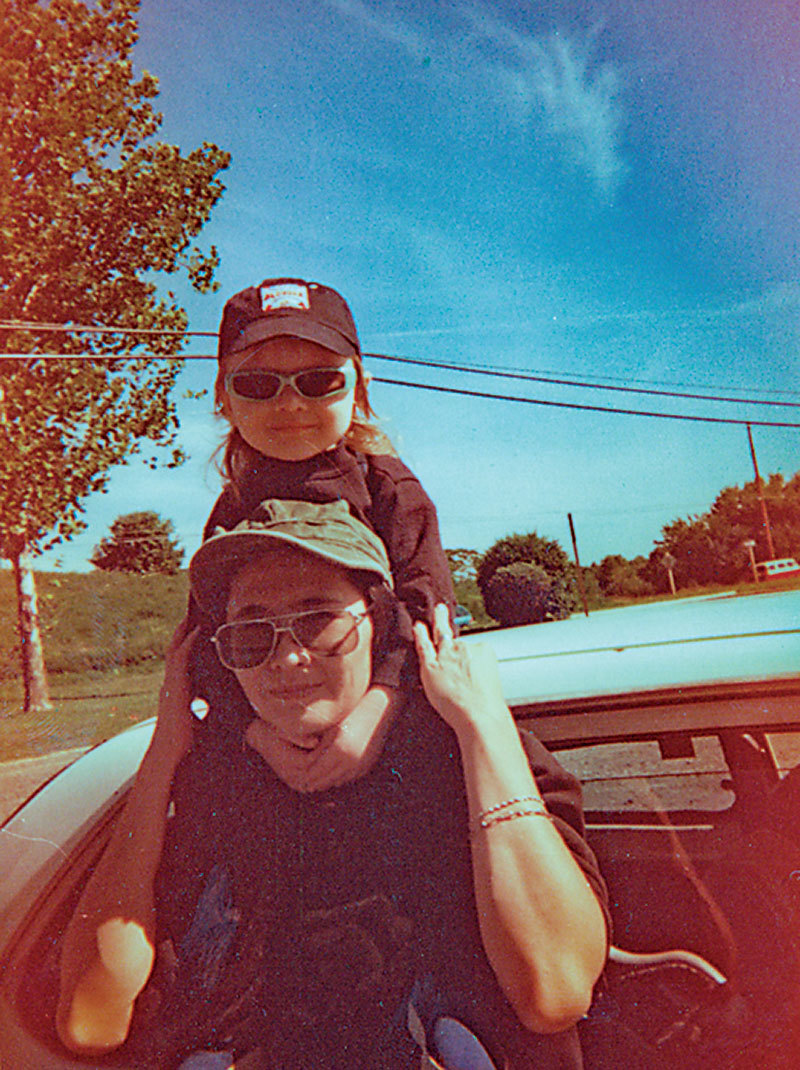
BOB AND HIS MOM THAT SAME DAY.
Inmates sit in rows behind one side of a half wall, where they can chat with visitors. There’s no privacy. At the end of a session, they walk to the end of the row, where they can hug and kiss their loved ones under the watchful eyes of guards and security cameras.
During the visits, Siple and Bob bonded. “He just started calling me mom, mommy, mama. Eileen didn’t seem right. Aunt didn’t seem right,” she says. “One day, I said, ‘Let’s make it official.’” So on May 27, 2015, Siple became Bob’s adopted mother in the same courthouse where he pleaded guilty to manslaughter. Photos from that day show a jubilant pair, despite Bob’s shackles. “It felt right in my heart, like it did to adopt Larry,” she says. “It felt like the right thing to do.”
Bob was happy, too. He wrote a letter to a friend about his adoption, telling her, “I had such a good time that day. It was the best day I’ve had in years.”
His name has been formally changed to Robert Conley Siple. And he now calls Siple mama for real.
Siple is working diligently to get Bob’s plea vacated. Last year, his attorney, Nancy S. Forster, sought a post-conviction relief hearing in Harford County Circuit Court, arguing that Bob received inappropriate direction during his plea hearing and that the sentence should be vacated.
During the May 16 hearing, about three dozen supporters, including Siple and other family members, formed a prayer circle in front of the courthouse before filling up the courtroom. A long-haired, still slight Bob Richardson, dressed in blue prison garb and wearing shackles, looked overwhelmed as he entered the packed gallery. He spoke only to his attorney.
Paul Kilduff (no relation to Dottie Kilduff) of Ednor Gardens-Lakeside in Baltimore was there to support Bob, whom he didn’t know in person. “I read about it in The Sun, and it seemed clear it was self-defense by an abused child,” Kilduff says. “You would fight back.”
But the elder Richardson’s sister,—and Bob’s aunt—Kathy Hall of Havre de Grace, has another view of the tragedy. She set up a Facebook page, “Robert Richardson Jr. And This Is My Story,” to defend her brother. There are 136 followers. “I want people to know that my brother wasn’t the monster they say he is,” she says. “He was nice. He would give you the shirt off his back.”
She has mixed emotions about her nephew, whom she still calls Bear. “I love him, but he killed my brother,” she says. “I don’t hate him, but I hate what he did.”
She believes that Siple doesn’t know what Bob is really like. “I would like for Bear to go home to his new mother, and she will see a side she doesn’t know,” she says. “She won’t like it.”
Hall posted a long defense of her sibling on Facebook on May 23, 2017, written in the voice of her brother.
Hall begins with a happier time for the deceased Richardson: “I started dating Peggy, and before you knew it, that little spark lit a fire. We got married and wasn’t long I had a son. Finally got that boy. We named him Robert C. Richardson III. How about that? I was a proud daddy. . . . He was perfect and fuzzy. We called him Bear.”
Hall also writes about Bob’s adolescence from his father’s perspective: “ . . . When Bear hit eighth grade, I don’t know what happened. Life just went totally crazy. I tried keeping him in school and away from certain kids, but that didn’t go well. . . . By ninth grade, he was out of control. He was getting high all the time. Not going to school. Not coming home . . . [after my knee surgery], I pretty much gave up on everything. Finally decided if Bear wanted to be so distant he can make his own meals and wash his own clothes. I’m done.”
Another Facebook post on Hall’s page, dated February 28, 2018, simply states: “His request for a new trial was denied.”
"This is just a bump in my road, and my story doesn’t end here. I still have a future, and I will get there."
After deliberating for nine months, Harford County Circuit Court Judge Yolanda L. Curtin turned down the post-conviction relief for Bob, determining that he had knowingly and voluntarily accepted the guilty plea for manslaughter and waived his right to a jury trial. His attorney has filed an appeal with the Maryland Court of Special Appeals. There is no time frame for a decision.
Bob is pragmatic about the judge’s ruling. “I had hoped for good news, but I wasn’t surprised that my request was denied,” he says. “It just gives me more time to work on myself.”
In person, Bob looks much younger than his age and could still pass for a high-school student. He has an engaging smile and a quick wit, and he is working hard to better himself in prison. He’s earned a GED (high-school) diploma while incarcerated and is an aide in the prison auto shop. His goal is to own an auto repair shop one day.
“I’ve been away for six years now, since I was 16, and I’ve grown up in here,” Bob says. “This is just a bump in my road, and my story doesn’t end here. I still have a future, and I will get there.” Prison is a haven for him in some ways. “Of course, it’s been hard for me but not really any harder than my childhood,” he says. “I know I’ll eat supper tonight, and I didn’t always have that comfort. And as crazy as it sounds, I know I’m safe when I sleep. I could not have said that as a child.”
Eileen Siple wants a better environment for her adopted son. “He’s had a life filled with so much that is wrong and unjust,” she says. She has an immediate plan when he comes home—new clothes, a steak dinner, and a therapist.
But their relationship isn’t one-sided. Bob is an inspiration to her. “He’s been such a godsend to me,” Siple says. “It’s such a story of survival. At 16, he knew someone was going to die. He wanted to live.”
